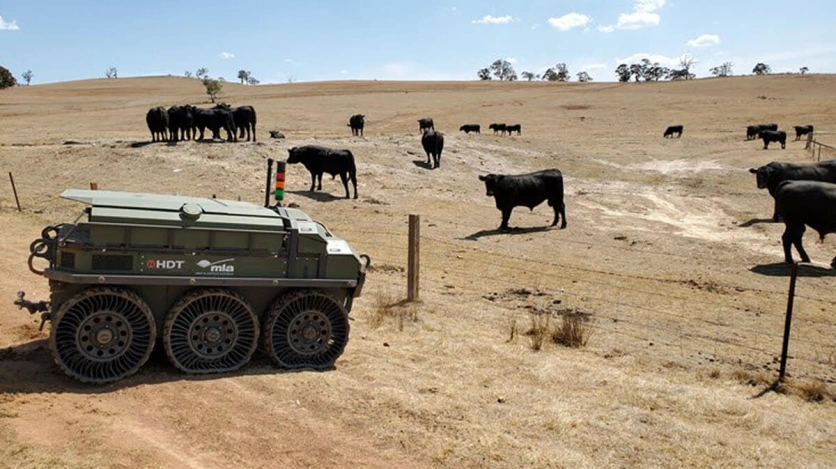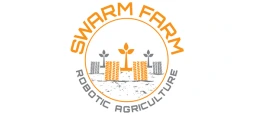
Agtech’s role in the war against weeds
Jul 30 2020

Agtech for weed control in broadacre cropping and livestock enterprises.
Integrated weed management in the era of emerging agtech and new digital technologies means that farmers and producers will soon have many more tools at their disposal, beyond herbicide rotations and strategic tillage.
The Centre for Invasive Species Solutions estimates the cost of weeds to Australian agriculture to be around $5 billion annually. This is made up of chemical control costs in broadacre cropping, and production losses in the grains, horticulture and livestock industries. In addition, herbicide resistance, resulting in declining efficacy across a number of key chemical groups, threatens longer-term agricultural productivity.
Agtech for weed control in broadacre cropping
The introduction of weed-seeking technology – whereby optical sensors detected weeds in fallow paddocks and applied a spot spray – was a game changer for broadacre cropping, reducing herbicide inputs by up to 90%. Newer technologies, such as autonomous vehicles and/or robots, take this a step further, allowing spraying operations to be completed and monitored remotely. Some include weather- monitoring systems, which are capable of determining when preset weather parameters are triggered and shutting down, reducing the risk of off-target spray damage.
However the biggest gains in weed control have occurred in the identification of in-crop weeds using machine learning. Previously, weed-seeking technology could only detect weeds in fallow, relying on optical sensors to detect the green of the weed against the brown backdrop of a bare paddock. Being able to detect and selectively kill weeds in a crop (i.e. detecting green on green) gives farmers considerably more control throughout the cropping season.
The new technology employs cameras, rather than sensors. The robot is trained to detect differences in plant characteristics such as size, colour, height, leaf shape and growth habit, and it then develops an algorithm that drives object detection. For a machine to accurately detect the difference between a wheat seedling and an annual ryegrass seedling for example – something even a human may struggle with – requires an enormous amount of data. Currently, the technology has been available in a research setting, but those involved predict it won’t be long before it is commercially available. From there, grower input can continue to build the databases via open-source software to refine and improve the accuracy of the technology.
The benefit of weed identification is that once the weed is identified, the grower can use any form of weed control. This may be a herbicide, but could equally be one of the newer, emerging technologies, such as steam, lasers or microwaves.
GRDC is investing in microwave technology for weed control, through start-up company Growave. Unlike herbicides, the microwave system can be used in all but the most extreme weather conditions and the issue of spray drift is eliminated. The microwaves are distributed in a very thin layer above the soil, safely and efficiently killing the surface weeds they contact, as well as the weed seed bank in the topsoil.
Agtech for weed control in livestock enterprises
In the livestock sector, MLA is investing in two technologies for the detection and control of weeds: drones and autonomous vehicles.
The Intelligent Livestock and Asset Management System (iLAMS) project saw MLA partner with Malaysian drone company Aerodyne to develop autonomous drones and sensors for the Australian red meat and livestock industry.
There were nine focal points of the iLAMS program, one of which was autonomous sensing to identify weeds (particularly those that are hazardous to sheep and cattle) and then develop algorithms to provide advanced analytics and preventative data. The Aerodyne drones use hyper-spectral cameras to detect different species of weeds.
The second arm of the project was the identification of a suitably robust autonomous vehicle that would have the capability to traverse rough terrain. MLA settled on the HDT, which was developed for the American defence force. The vehicle is diesel electric and uses GPS navigation. It can operate in mud, water and bushland and remain stable on angles of up to 60°. It has a collision-avoidance system to enable it to avoid fencelines, trees and livestock. MLA’s Manager – Supply Chain Technology Innovation, Darryl Heidke, envisages that it will ultimately be able to be deployed against problem weeds.
“It’s about gaining a greater return for the water used, whether that’s in terms of yield, quality, consumer demand, or company reputation,” says Mr Groat in the research report.
Ultimately, the goal is to combine the two technologies, as the HDT is designed to have a tethered drone on board.
You Might Also Like
Jul 23 2025
Low yields from wheat production? Here’s why.
For the past two decades, agronomists and farmers have been trying to solve the problem of low yields using Variable Rate Fertilisation application. However, yield is only half of the equation. In-field…
Read MoreMay 25 2025
Get more from your livestock data with these six agtech solutions
Farmers across Australia are producing more data than ever. But much of it remains frustratingly siloed. Here’s how you can get the most from your data as a livestock producer.
Read MoreMay 20 2025
Purchasing AgTech? Ask yourself these five questions first.
Whether it’s your first time, or you’ve already got plenty of technology in operation – asking the right questions ensures you take the best approach.
Read MoreApr 22 2025
Building farm data trust
At AgTech Finder we ask vendors to provide their data policies so that farmers can make informed choices about agtech and be comfortable about the way their data is being collected and…
Read MoreList your company on AgTech Finder.
AgTech Finder helps Australian Farmers and producers find the product that’s right for them.
Register now to be a part of the community, get access to a national platform and start gaining insights to improve your products.




